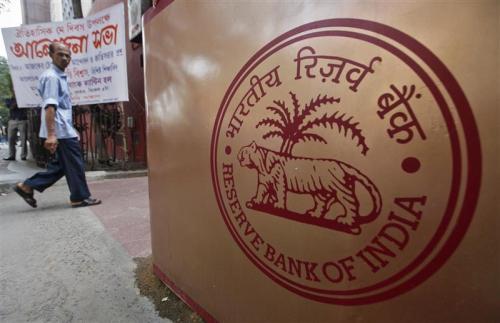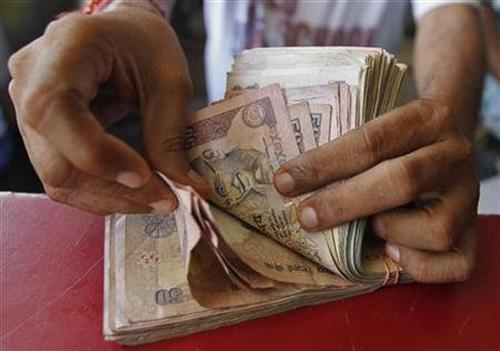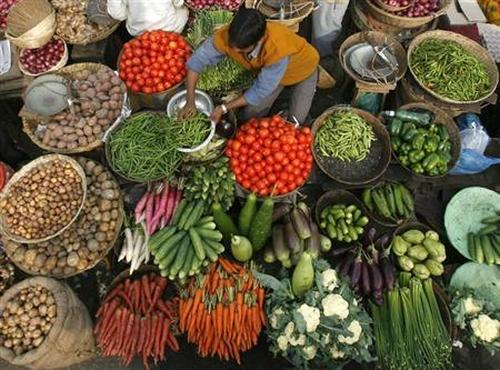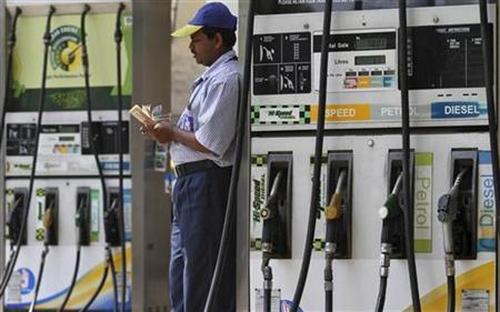Photographs: Reuters A Seshan
For RBI, retail inflation is a better benchmark, compared to Wholesale price index, to look at when formulating policies to control inflation.
It is a matter of satisfaction that in an ambience in which every policy of the government has an electoral angle - so that only benefits to parties in power, and not the cost to the nation, are considered - we have an apolitical institution that adheres to its dharma of maintaining price stability, depending on its own judgement.
The latest review of the Reserve Bank of India (RBI) testifies to this fact. It has decided to adopt a standstill policy with no change in the light of trends in the economy, despite pressure from banks, industry and other vested interests for a cut in the cash reserve ratio (CRR) or policy rates or, even better, in both.
The decline in the gross domestic product (GDP) growth and the inflation rate, the latter based on the wholesale price index (WPI) in November (a mere 21 basis points from the previous month), is cited as the reason for the cuts.
Proponents of a relaxation in policy conveniently overlook the near-double-digit inflation rate revealed by the consumer price index (CPI).
The question is whether the central bank can put the inflation genie back into the bottle, after having unleashed it in the wake of the Lehman crisis.
Clearly, the expansionary policies of the government and RBI in 2008-09 were a panicky overreaction to the international financial crisis and unwarranted by domestic circumstances.
...
Can RBI keep the lid on inflation?
Photographs: Amit Dave/Reuters
Although India was not affected directly by the crisis and the domestic markets functioned without any major disruption, the central bank released liquidity disproportionate to requirements.
Between October 2008 and April 2009, the bank lowered the repo rate 425 basis points and the reverse repo rate 275 basis points. The total amount of liquidity through conventional and non-conventional measures was close to Rs 560,000 crore (Rs 5.6 trillion), or the equivalent of about 9 per cent of GDP.
Simultaneously, fiscal relief resulted in the gross fiscal deficit increasing from 2.5 per cent in 2007-08 to 6 per cent in 2008-09.
Adding to the pressure on the demand side were the loan write-off and the extension of the scheme, since renamed as the Mahatma Gandhi National Rural Employment Guarantee Scheme, to the entire country.
The excesses committed by the monetary authority were evident from the fact that some of the refinance facilities remained unutilised, and there was a heavy return flow of funds from banks to RBI through reverse repos during 2009-10.
Unlike in the West and Japan, which did not suffer from inflation owing to their unutilised production capacities, the stimulus, both monetary and fiscal, seemed to have buttressed incipient inflationary forces in India though with a time-lag. The chickens have come home to roost!
...
Can RBI keep the lid on inflation?
Image: A vendor arranges vegetables at a market in Siliguri.Photographs: Rupak De Chowdhuri/Reuters
Further, while developed countries experienced a decline in GDP - and it was called the Great Recession - India continued to grow, though at a decelerating rate owing to the crisis that affected, inter alia, export demand.
Now, to put the genie back into the bottle will require severe contractionary measures of the Volcker type in the US, for which the country is not prepared. Remember how the US federal funds rate reached 20 per cent in June 1981.
Inflation had peaked at 13.5 per cent in 1981 and was successfully lowered to 3.2 per cent in 1983. No doubt the country had to pay the price of recession.
But you cannot have the cake and eat it too. Now, the only option for RBI seems to be to decelerate its money-supply growth gradually in the coming years.
My dissent with RBI in its approach to inflation is on two counts. First, despite the availability of an improved CPI that truly reflects the burden of price rise on the common man, it still seems to be looking at WPI.
RBI's statement that "...inflation pressures appear to be moderating" is based on WPI. I would recommend that RBI shifts its emphasis to CPI. That CPI is a better measure of inflation than WPI with its serious limitations is acknowledged by all, including the central bank.
...
Can RBI keep the lid on inflation?
Image: India's core inflation should really relate to food and energy.Photographs: Rupak De Chowdhuri/Reuters
Second, RBI should stop aping the West in focusing on core inflation, as defined in the West. It takes comfort from the fact that it is 4.5 per cent, and below its target of 5 per cent.
In the US, core inflation, revealed by CPI, refers to inflation in urban areas, which excludes price rises in food and energy (rural areas are not covered in the index owing to their negligible population).
The reason for the exclusion is that their prices are volatile, and are not amenable to monetary policy action. The weights for food (13.7 per cent) and energy (8.6 per cent) add up to 22.3 per cent. In India, the weights for the two groups are 49.7 per cent and 9.5 per cent, respectively, totalling 59.2 per cent.
Thus, our core inflation should really relate to food and energy, excluding the remaining items, contrary to the practice in the US. Our CPI has separate rural and urban categories that can show marked variations in the indices.
RBI should shift its focus to this new definition of core inflation from January without waiting for the Annual Policy Review for 2013-14. This shift brooks no delay considering the urgency of getting a true measure of inflation that has persisted for more than three years.
The author is an economic consultant, former officer-in-charge, Department of Economic Analysis and Policy, Reserve Bank of India, and Adviser to National Bank of Kyrgyzstan and Bank of Sierra Leone






article